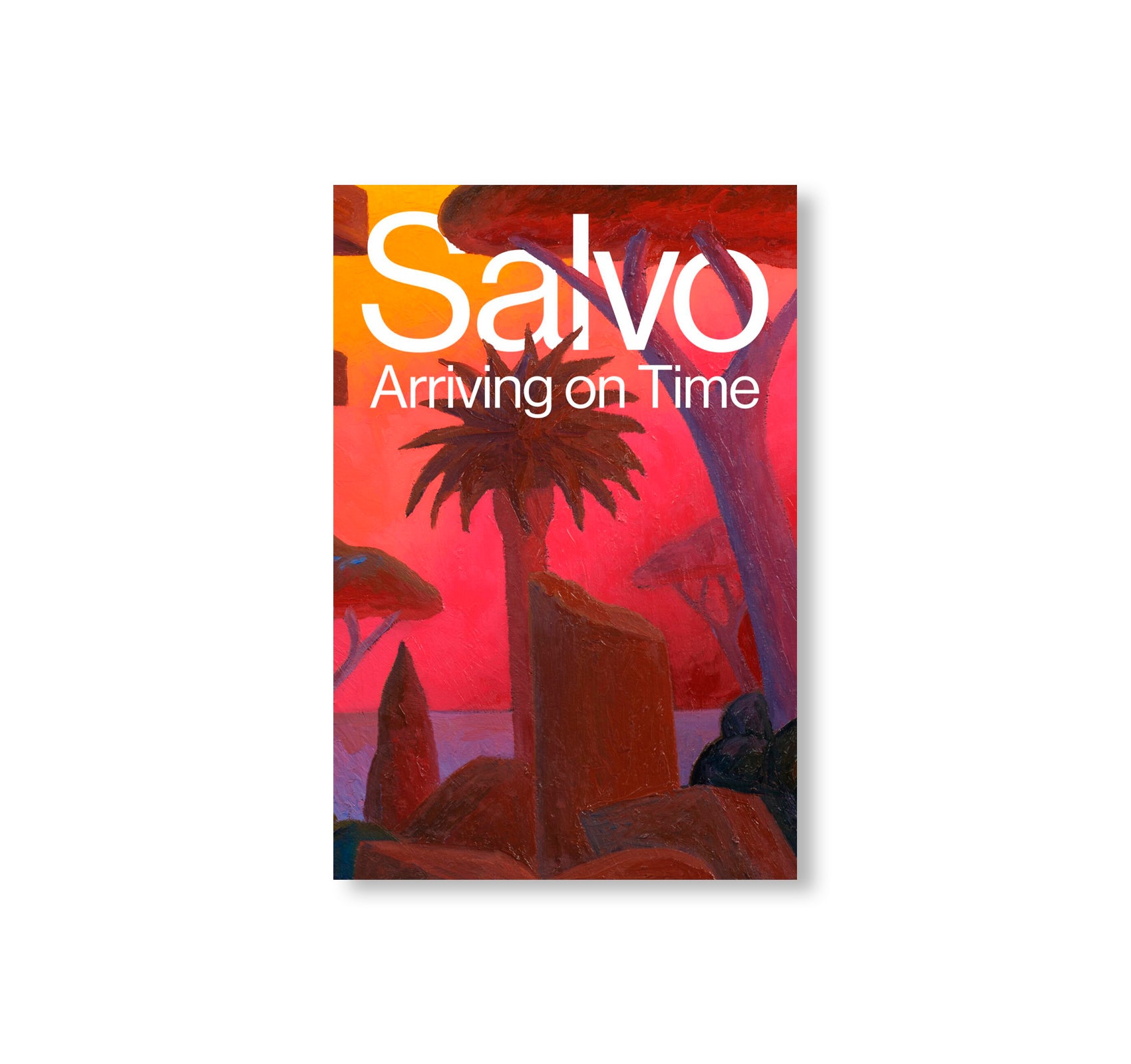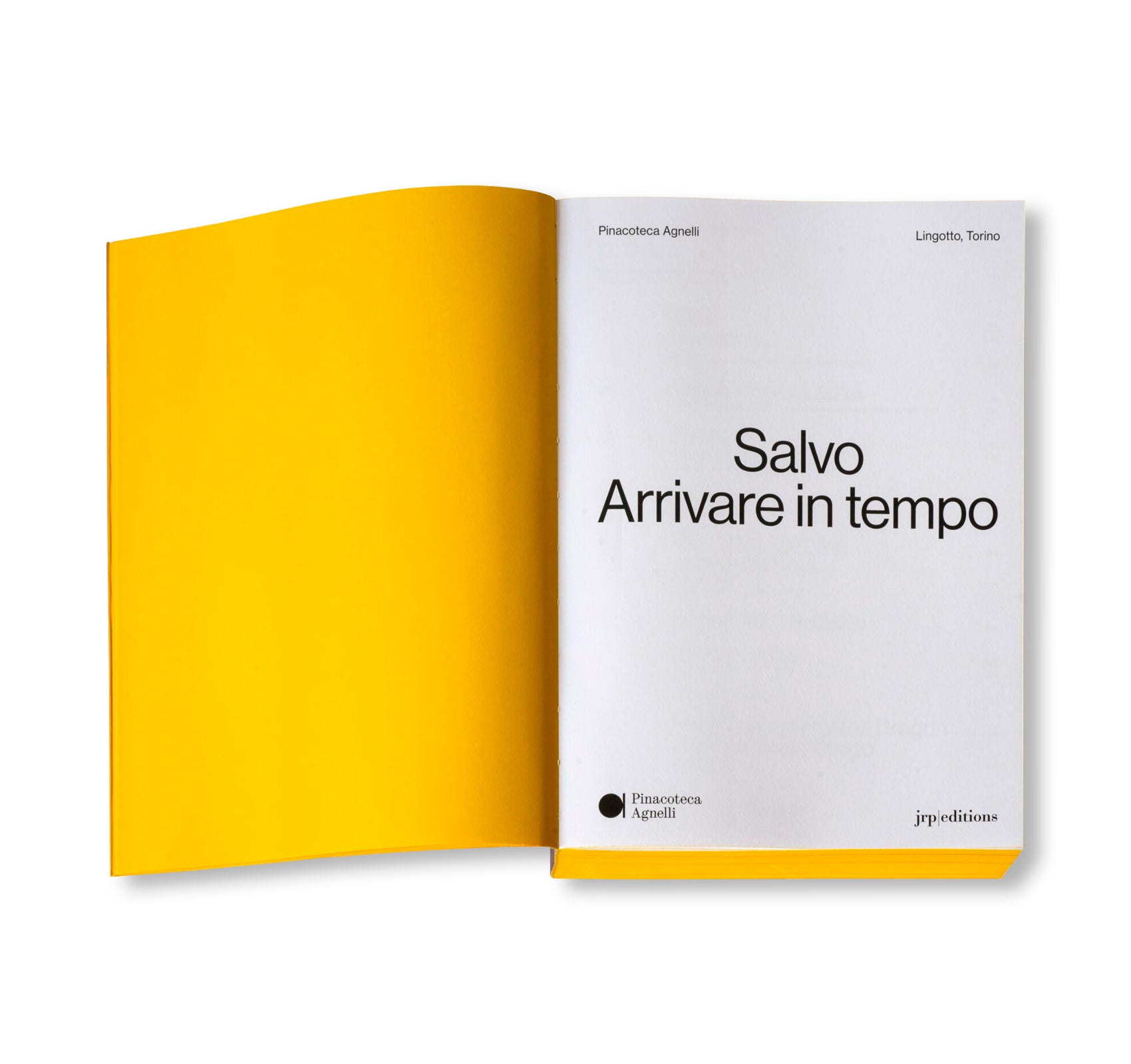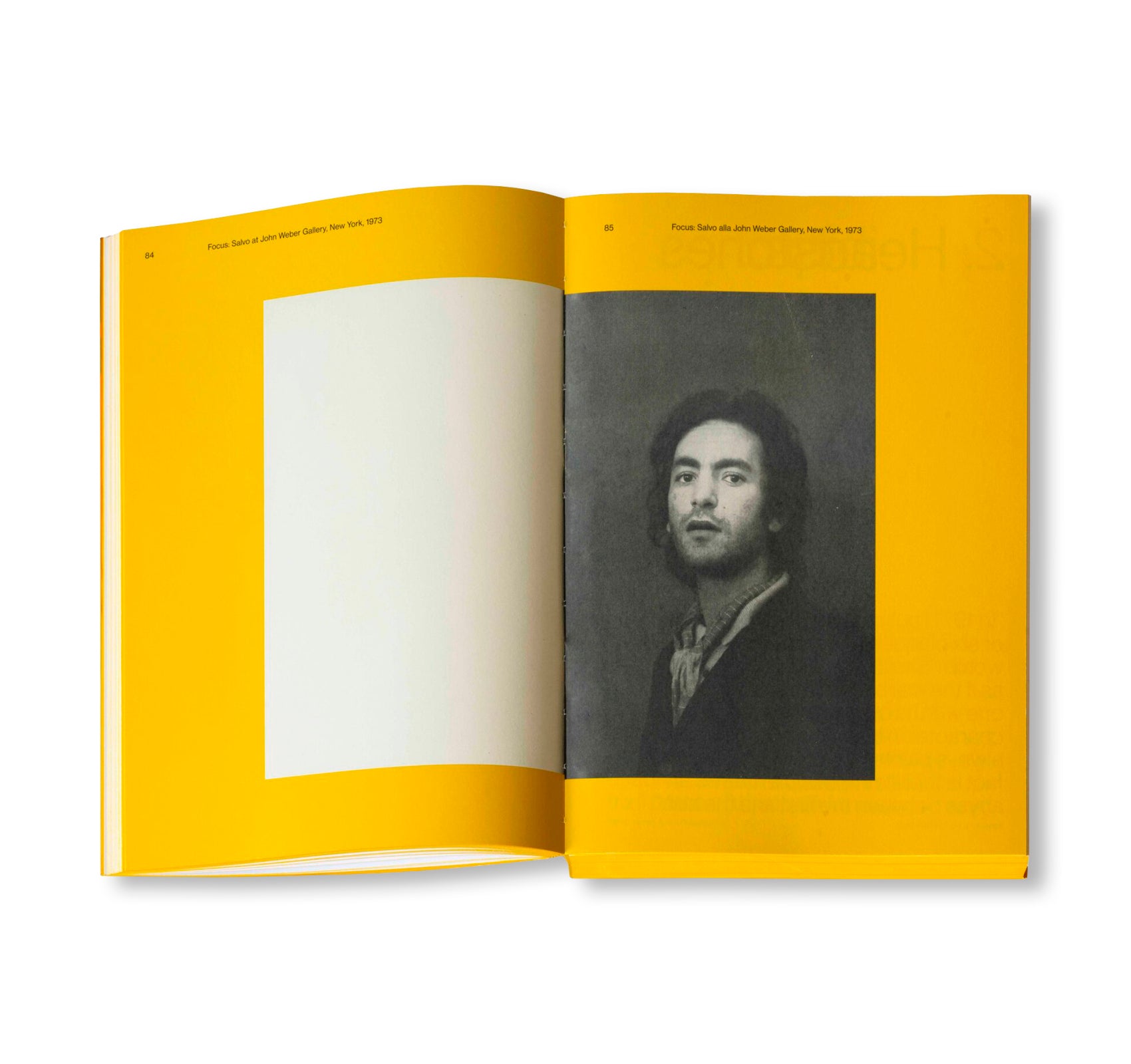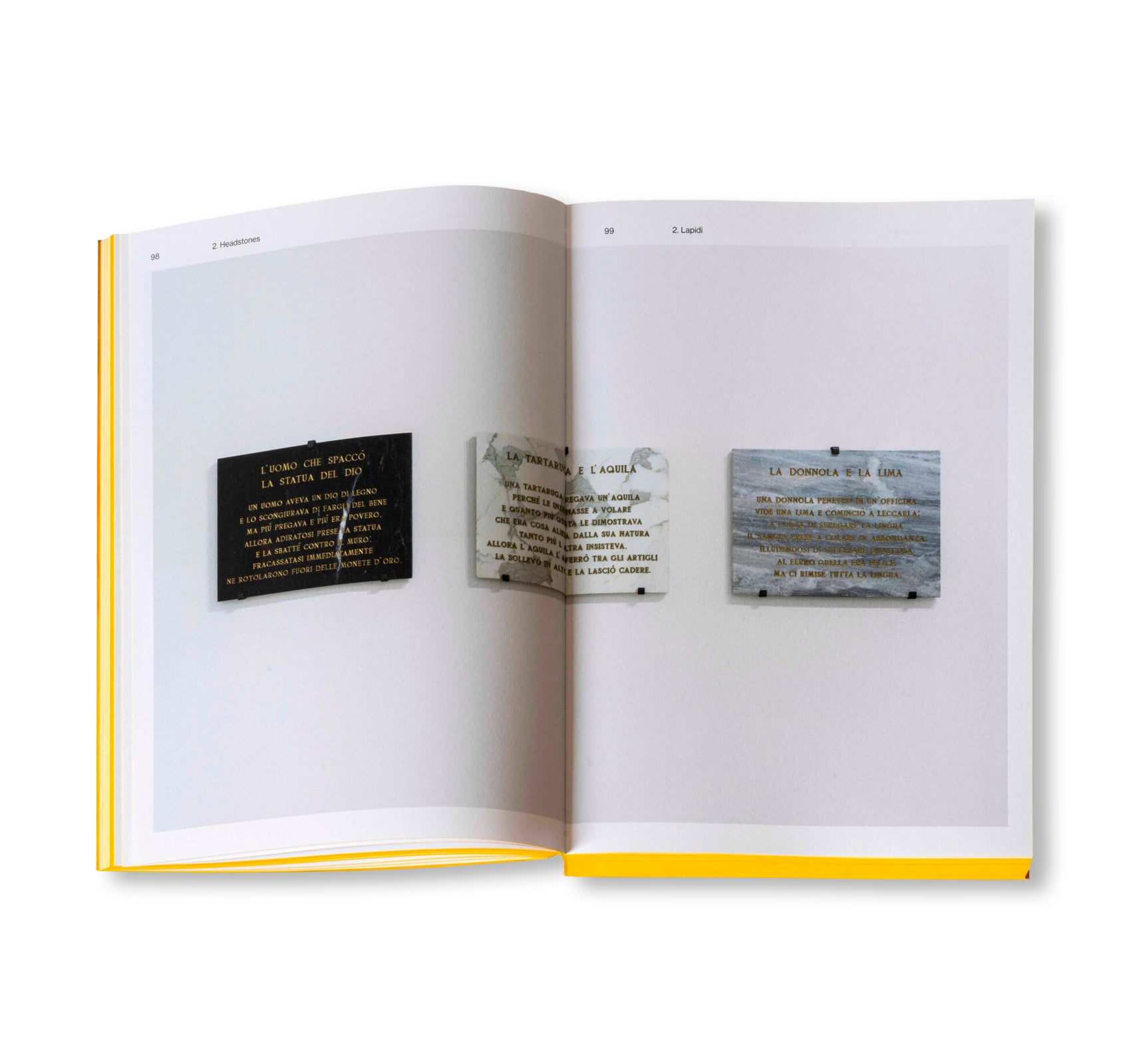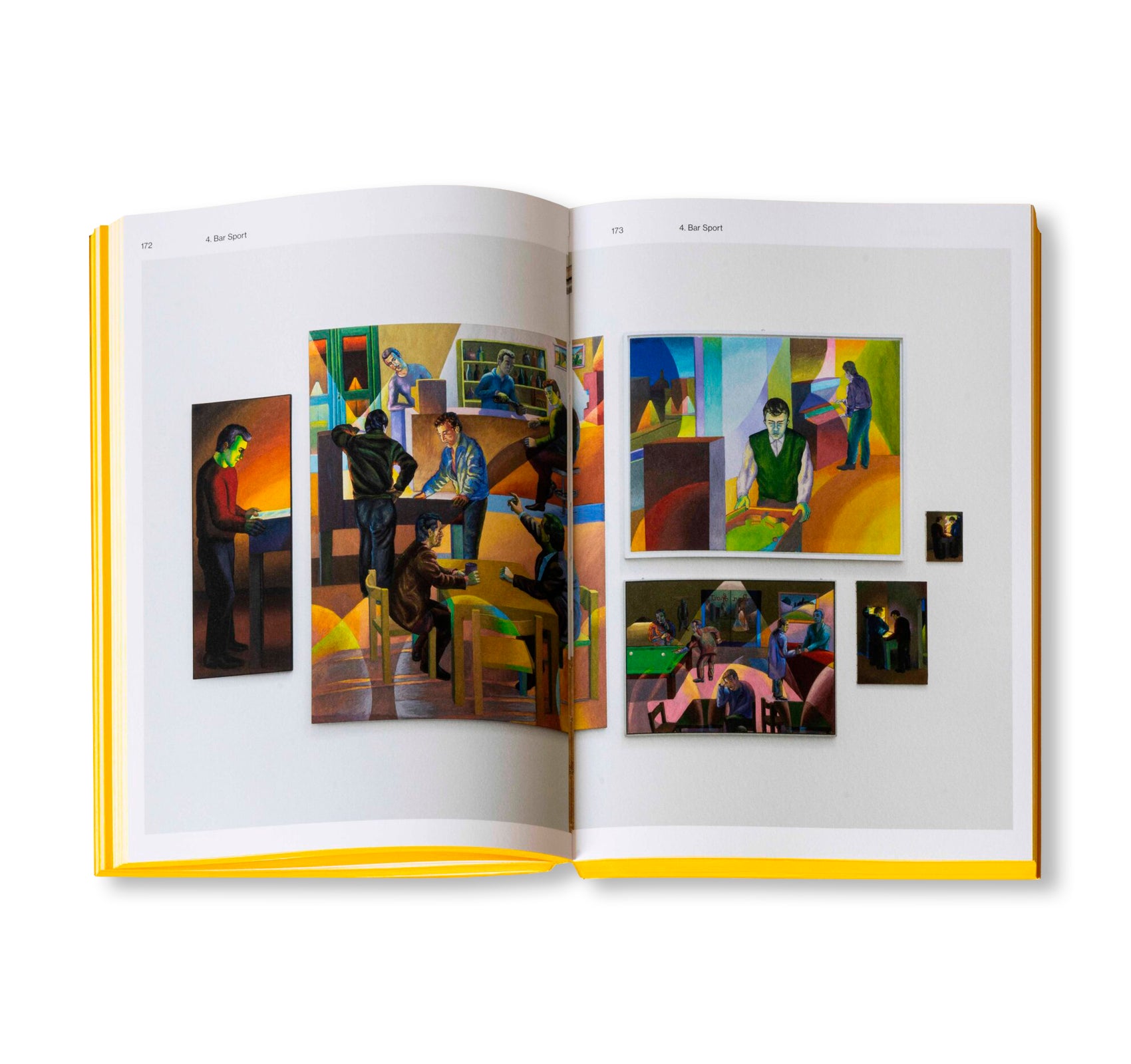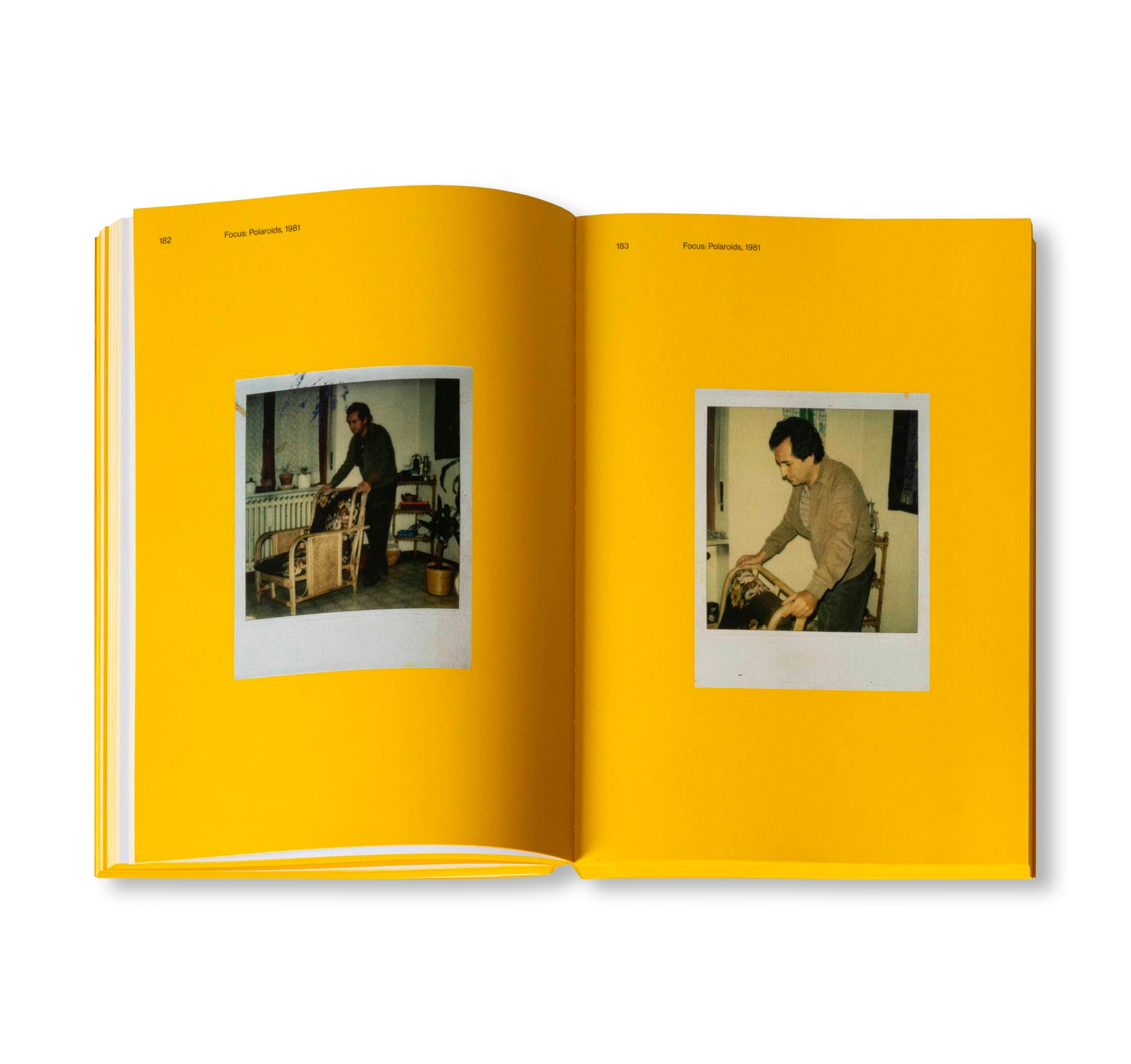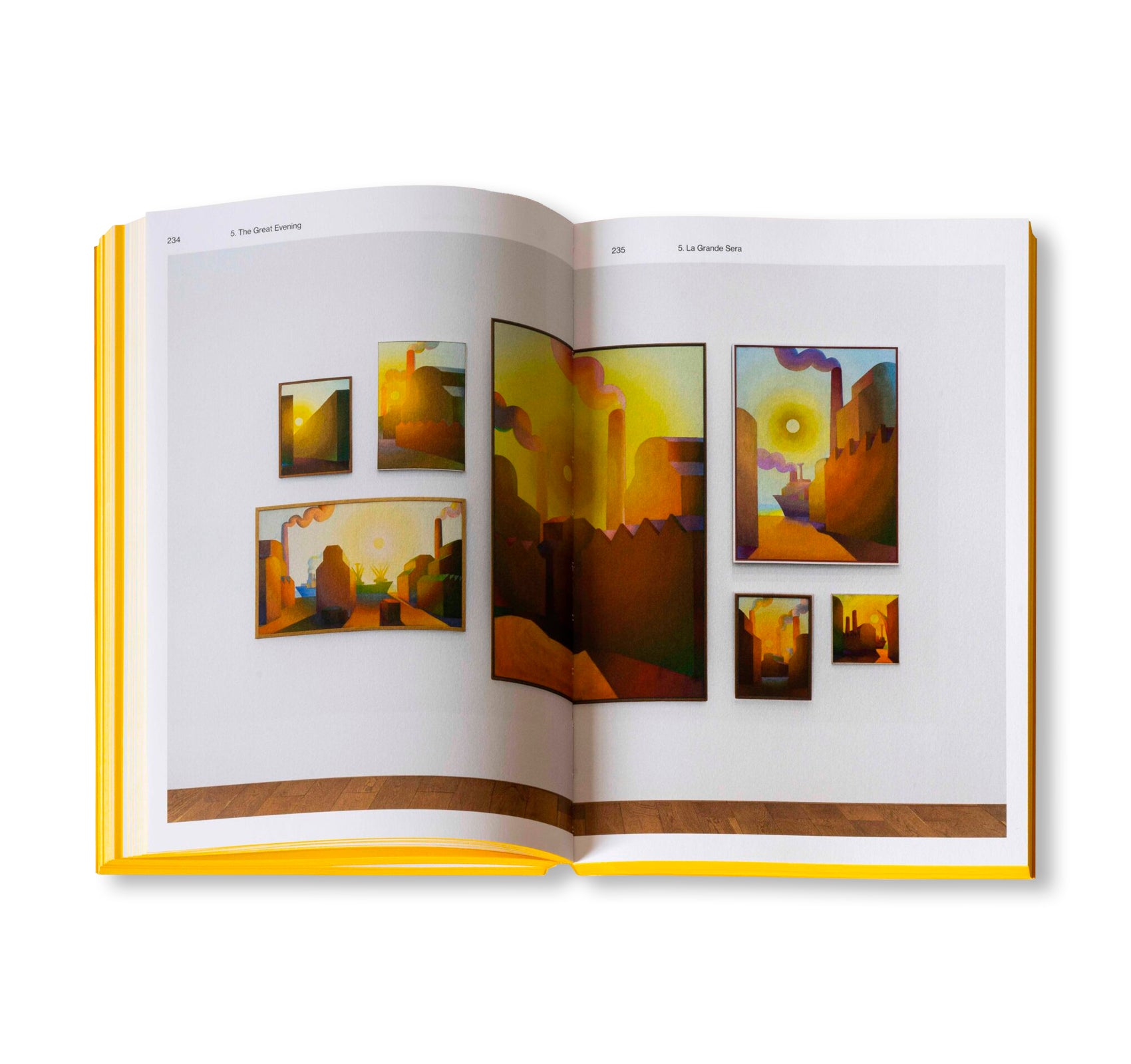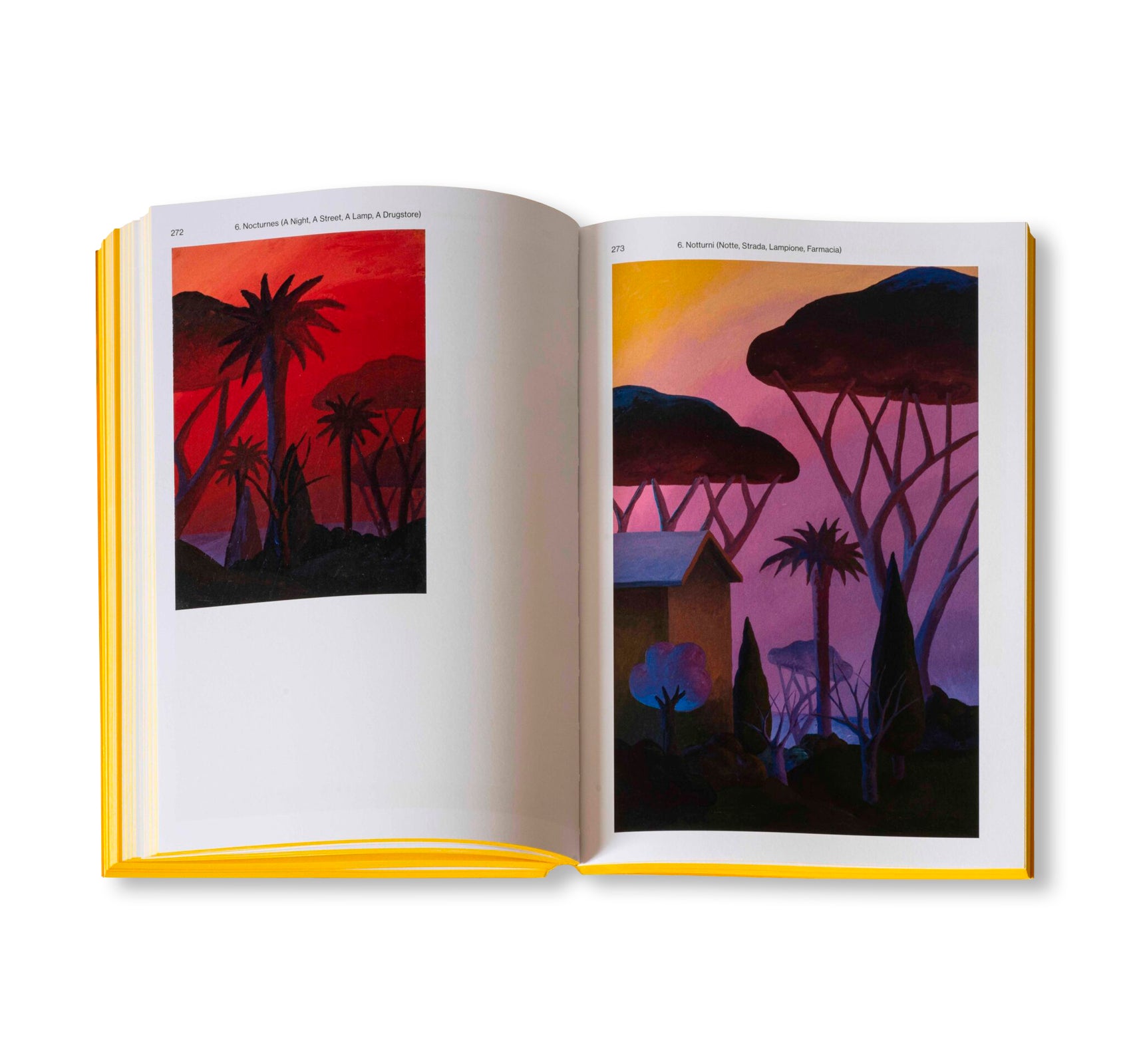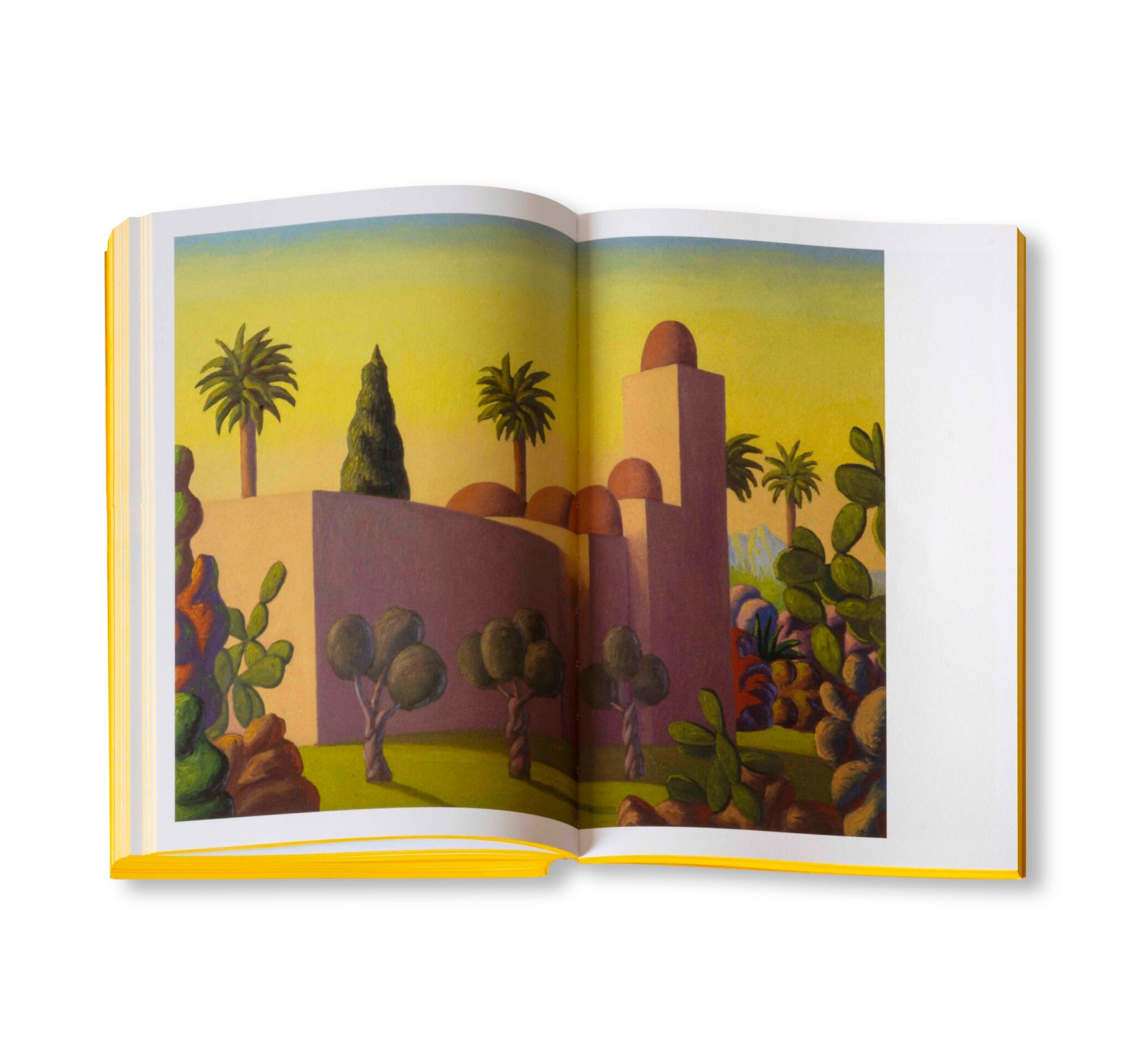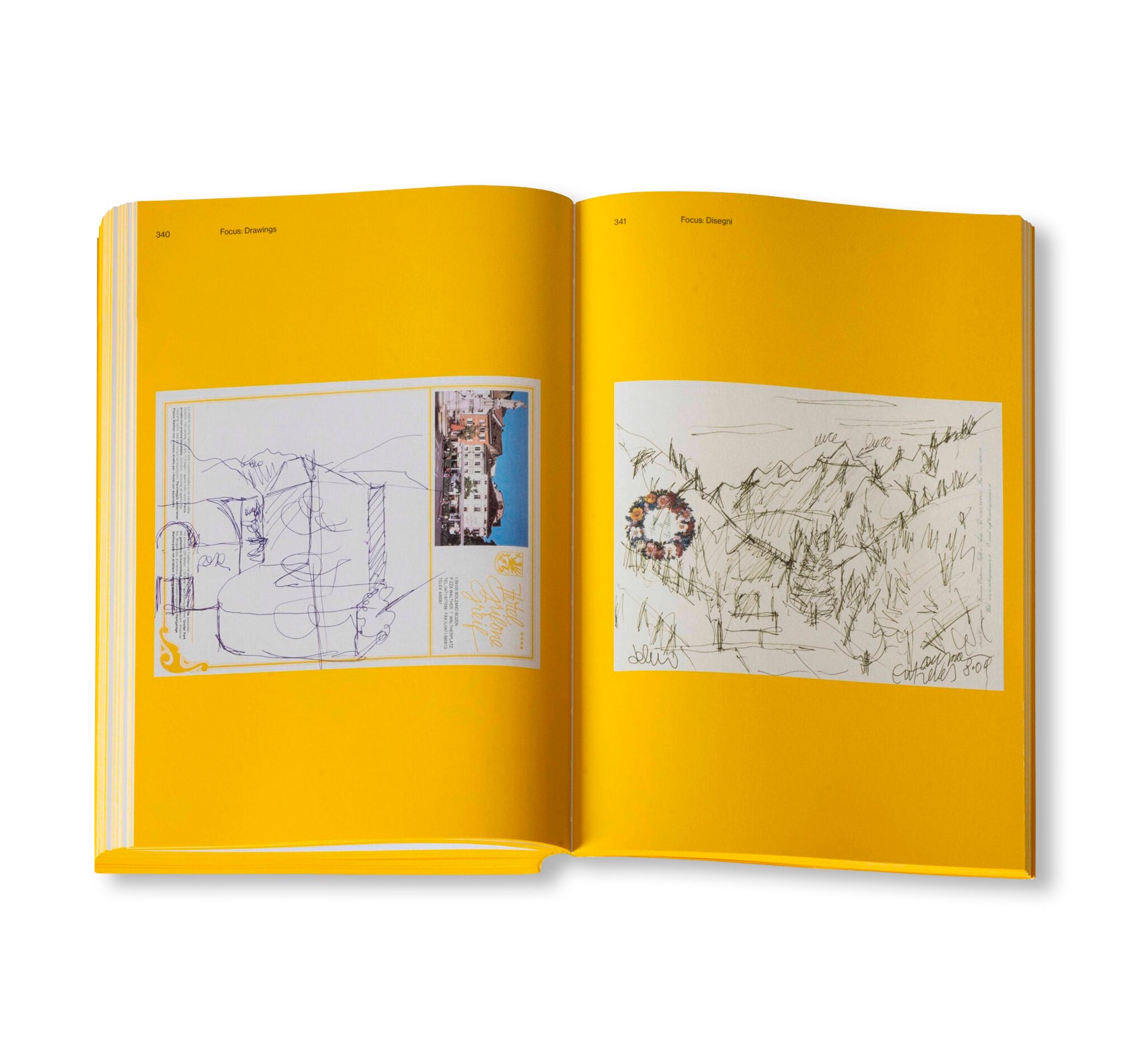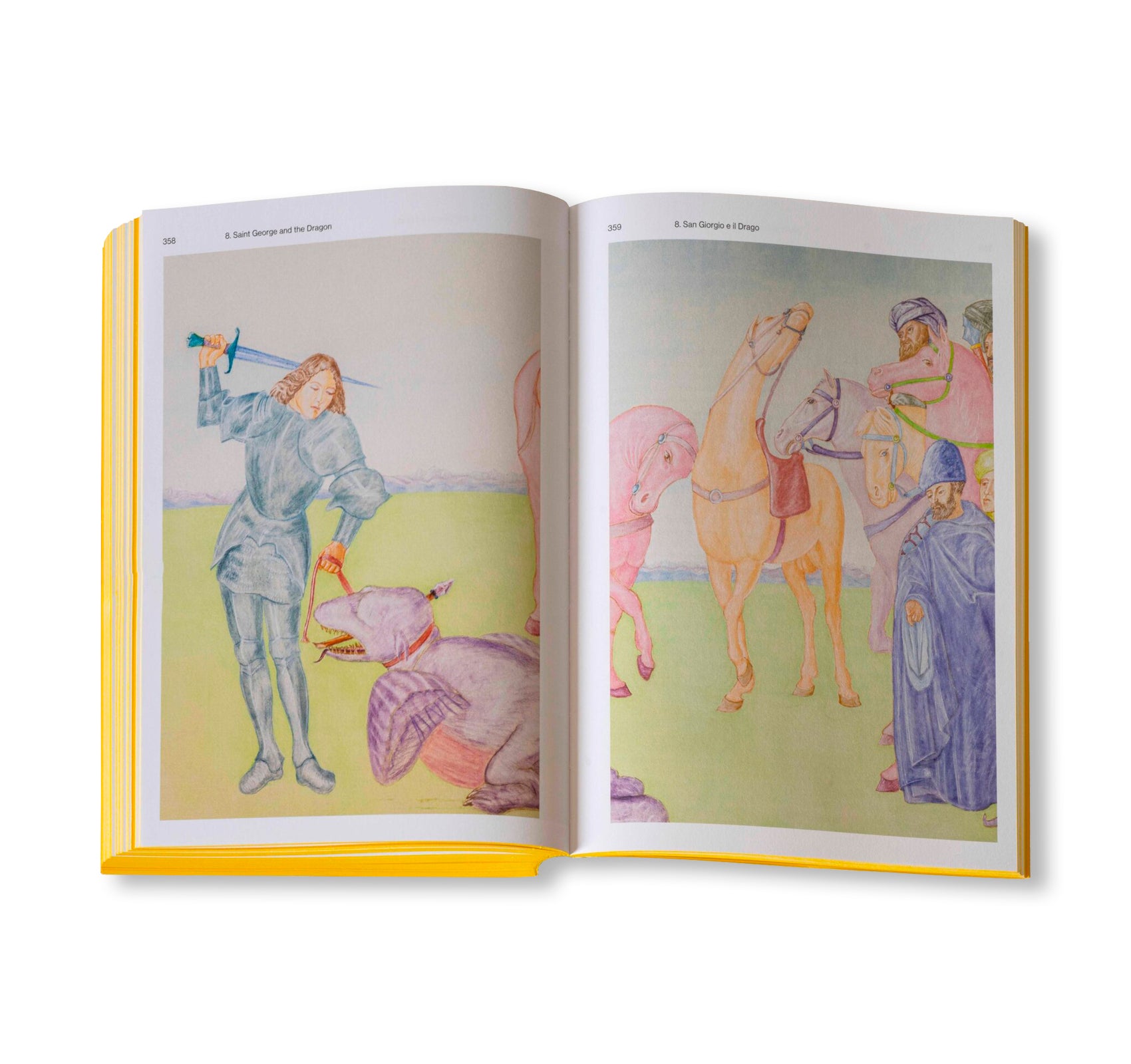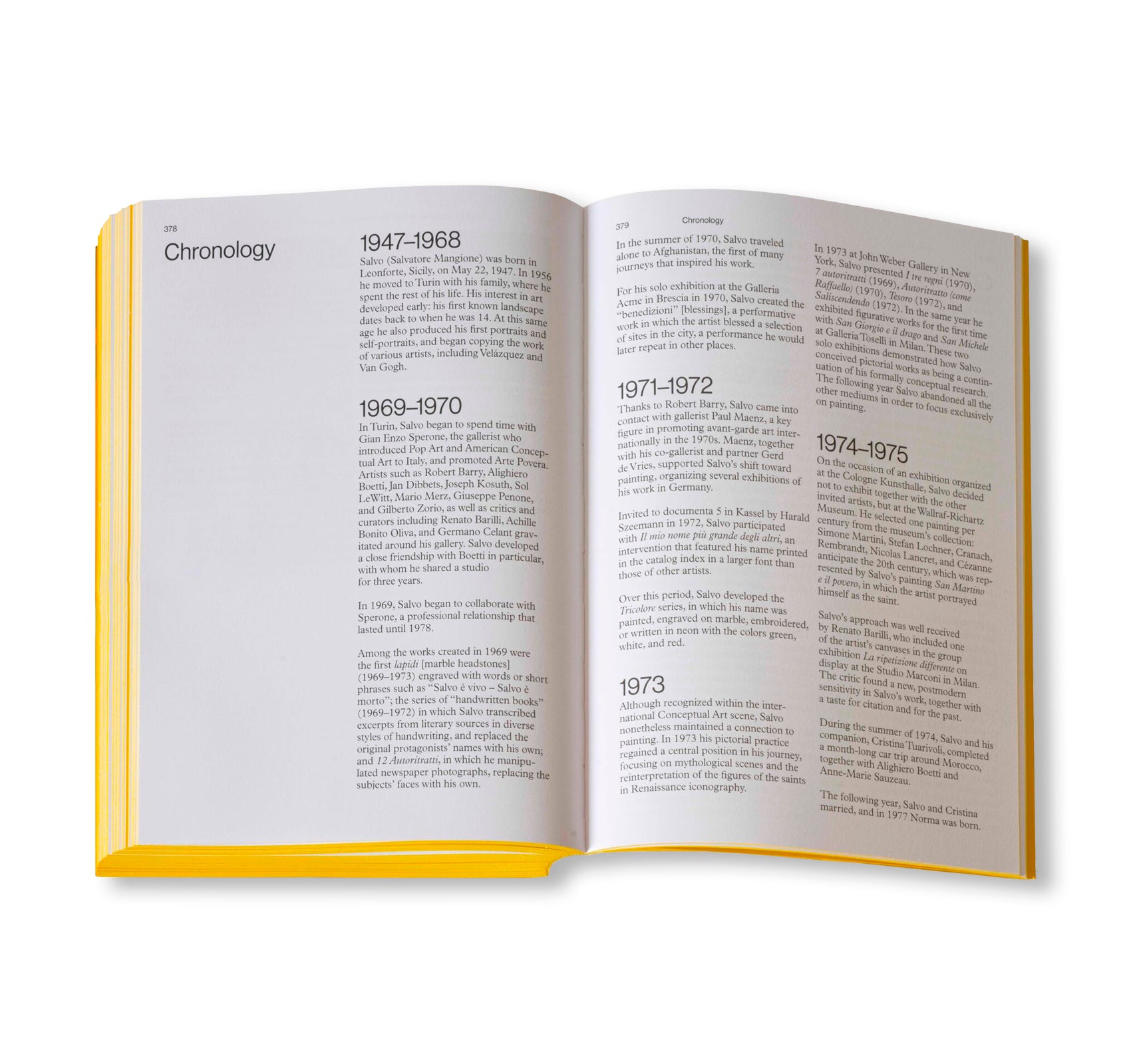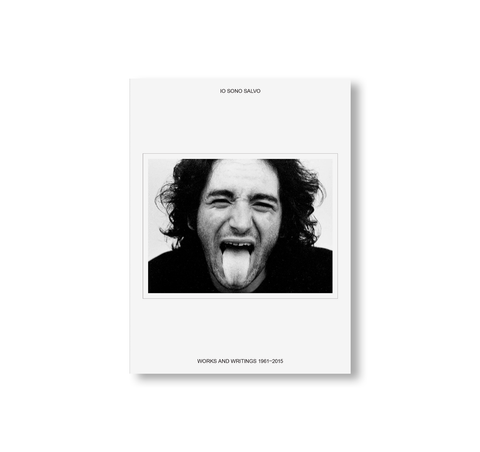SALVO: ARRIVING ON TIME by Salvatore Mangione (Salvo)
イタリア人アーティストであり「サルヴォ」として知られるサルヴァトーレ・マンジオーネ(Salvatore Mangione)の作品集。2024年11月から2025年5月まで「ピナコテカ・ジョヴァンニ・エ・マレッラ・アニェッリ絵画館(Pinacoteca Giovanni e Marella Agnelli)」で開催されている展覧会「Arrivare in tempo(Arriving on Time)」に伴い刊行された。
作者はイタリア現代美術界で最も特異な存在の一人である。特定の芸術運動に属することなく独自に活動し、美術史、言語、光、色彩を探求する、説得力の強い洗練された作品群を生み出した。
シチリア州レオンフォルテに生まれた作者は、1956年に家族とともにトリノに移り住んだ。トリノにおいてコンセプチュアルな活動を発展させていき、イタリアで展開した芸術運動「アルテ・ポーヴェラ(Arte Povera / 貧しい芸術)」の輪の一員となるとともに、マリオ&マリサ・メルツ(Mario and Marisa Merz)、ソル・ルウィット(Sol LeWitt)、ロバート・バリー(Robert Barry)、ジョセフ・コスース(Joseph Kosuth)、アリギエーロ・ボエッティ(Alighiero Boetti)といったアーティストたちと親交を深め、アトリエを共にした。1972年には、ハラルド・ゼーマン(Harald Szeemann)が中心となりキュレーションを行った画期的な企画で「ドクメンタ 5(DOCUMENTA 5)」に参加、1973年には初期に実践していたペインティングに立ち戻るが、当時は型破りでありながら古風な選択だと思われていた。その後の40年間は、風景や静物といった伝統的な美術史的主題や言語を探求することが、作者の円熟した作品制作において核心としてあった。反復するモチーフや幾何学形態を採用し、ポール・セザンヌ(Paul Cézanne)からジョルジョ・デ・キリコ(Giorgio de Chirico)に至るまでの美術史を取り入れる方法や、カフェ、街並み、港など日常を描いた表現との対話、そして光、影、色彩、時間の経過を体現する方法への飽くなき探求によって、写実主義と神秘主義が融合した魅惑的な芸術的ビジョンが生まれていった。
作品が展開する批評的な解釈をさまざまな国の人々へと広げるべく刊行された本作は、美術史家のヴァレリー・ダ・コスタ(Valérie Da Costa)とジョルジオ・ディ・ドメニコ(Giorgio Di Domenico)、アーティストのマリオ・ガルシア・トレス(Mario García Torres)、キュレーターで作家のアリソン・M・ジンジェラス(Alison M. Gingeras)らがテキストを寄せるほか、本展のキュレーターであるサラ・コズリッチ(Sarah Cosulich)とルクレツィア・カラブロ・ヴィスコンティ(Lucrezia Calabrò Visconti)、そして作者の作品を管理する非営利団体「アルチヴィオ・サルヴォ(Archivio Salvo)」のノルマ・マンジョーネ(Norma Mangione)とクリスティーナ・トゥアリヴォリ(Cristina Tuarivoli)による対談を収録し、作者の主なテーマとシリーズを通して視覚的な旅へと誘う。
Salvo (b. Salvatore Mangione, 1947–2015) is one of the most singular voices of Italian contemporary art. Working independently, without being a part of any particular artistic movement, he created a cogent and sophisticated body of work exploring art history, language, light, and color.
Born in Leonforte (Sicily), Salvo moved to Turin with his family in 1956. Here he developed a conceptual practice, and was part of the Arte Povera circle, as well as befriending artists such as Mario and Marisa Merz, Sol LeWitt, Robert Barry, Joseph Kosuth, and Alighiero Boetti with whom he shared a studio. In 1972 he participated in the groundbreaking documenta 5 curated by Harald Szeemann. In 1973, he returned to painting—which he had practiced in his early formative years—a choice that was at the time considered unconventional and old-fashioned. For the following four decades, the investigation of traditional art-historical subjects and languages such as the genres of landscape and of the still life were at the core of his mature oeuvre. His use of recurrent motifs and geometric forms, the way his art puts art history—from Paul Cezanne to Giorgio di Chirico—in dialogue with the representation of the everyday (cafes, cityscapes, ports), his ceaseless research into light, shade, color, and how to embody the passing of time give birth to a mesmerizing artistic vision where realism and mysticism merge.
Conceived to open up a critical reading of Salvo’s work to an international audience, this comprehensive publication includes new critical contributions by an international array of writers and art critics (Valérie Da Costa, Giorgio Di Domenico, Mario Garcia Torres, and Alison Gingeras), an extensive conversation by the curators of the Pinacoteca Agnelli Salvo exhibition Sarah Cosulich and Lucrezia Calabrò Visconti, with Norma Mangione and Cristina Tuarivoli from Archivio Salvo, as well as a visual itinerary through the artist’s main themes and series.
Salvo’s solo exhibitions include institutions such as Museum Folkwang, Essen and Mannheimer Kunstverein, 1977; Kunstmuseum, Lucerne, 1983; Boijmans van Beuningen Museum, Rotterdam, and Musée d’Art Contemporain, Nîmes, 1988; Villa delle Rose, Bologna, 1998; Galleria d’Arte Moderna e Contemporanea, Bergamo, 2002; Galleria d’Arte Moderna e Contemporanea, Turin, 2007; Museo d’Arte della Svizzera Italiana, Lugano, 2017; and MACRO, Rome, 2021.
Published with Pinacoteca Agnelli, Turin, on the occasion of the exhibition Arrivare in tempo (Arriving on Time), November 1, 2024–May 25, 2025.
